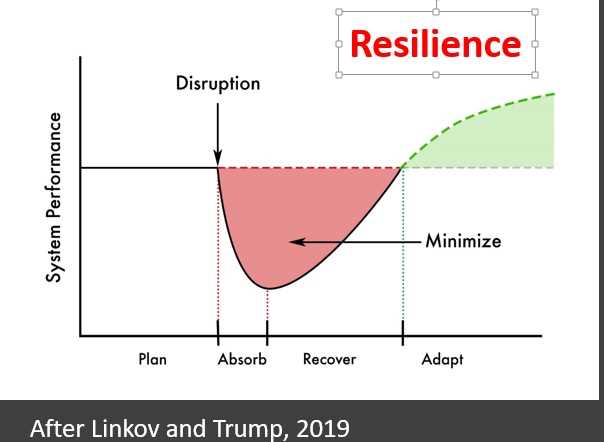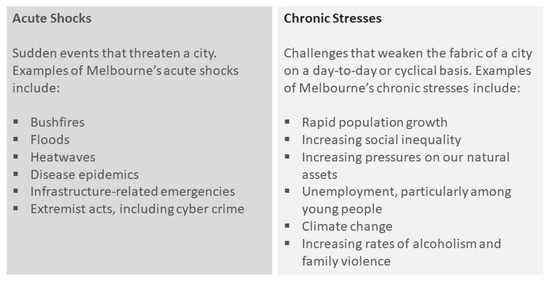
In today’s world, societies face numerous challenges that test their ability to adapt and withstand various shocks and stresses. These challenges can range from natural disasters, such as hurricanes and earthquakes, to long-term stresses like climate change. The concept of resilience has emerged as a crucial framework for understanding how communities and individuals can effectively respond to and recover from these challenges.
Resilience can be defined as the capacity of a system or community to anticipate, absorb, and adapt to shocks and stresses, while maintaining its basic functions and structures. It goes beyond mere survival and focuses on building the capacity to thrive in the face of adversity. Vulnerability is an important aspect to consider when examining resilience, as it highlights the factors that increase a system’s susceptibility to shocks and stresses.
Building resilience requires a multi-faceted approach that encompasses various dimensions, including social, economic, and environmental factors. It involves strengthening the capacity of individuals, communities, and institutions to withstand and recover from shocks. This can be achieved through measures such as improving infrastructure, enhancing social cohesion, and promoting sustainable practices.
Climate change is one of the most pressing challenges of our time, and it poses significant risks to communities around the world. Understanding the impacts of climate change and developing strategies to mitigate and adapt to its effects are essential for building resilience. By taking proactive measures to reduce greenhouse gas emissions, promoting renewable energy sources, and implementing climate adaptation strategies, communities can enhance their resilience and reduce their vulnerability to climate-related shocks and stresses.
What is Resilience?
Resilience is the ability of individuals, communities, and systems to withstand and recover from shocks and stresses. Shocks can include natural disasters such as earthquakes, floods, and hurricanes, while stresses can include ongoing challenges like poverty, inequality, and climate change. Resilience is about reducing vulnerability and building capacity to adapt and recover.
In the context of climate change, resilience is crucial. As the frequency and intensity of natural disasters increase, communities need to be prepared and able to bounce back quickly. Resilience involves not only the ability to recover from a disaster but also the capacity to adapt and mitigate the impacts of future climate-related events.
Building resilience requires a holistic approach that takes into account social, economic, and environmental factors. It involves investing in infrastructure, improving access to healthcare and education, strengthening social networks, and promoting sustainable practices. By building resilience, communities can better withstand shocks and stresses, minimize damage and loss, and recover more quickly.
Resilience is not about simply bouncing back to the way things were before a shock or stress. It is about learning from the experience and making changes to become stronger and more prepared for future challenges. It is about building a society that is adaptable, flexible, and able to thrive in the face of adversity.
| Key Concepts | Definition |
|---|---|
| Vulnerability | The susceptibility to harm or damage from a shock or stress. |
| Disaster | An event, often sudden and catastrophic, that causes significant damage or loss of life. |
| Capacity | The ability to anticipate, respond to, and recover from shocks and stresses. |
| Resilience | The ability to withstand and recover from shocks and stresses. |
| Recovery | The process of rebuilding and restoring after a shock or stress. |
| Adaptation | The process of adjusting to new conditions and challenges. |
The Concept of Resilience

Resilience is a crucial concept when it comes to understanding how communities and systems can withstand and recover from stresses and shocks, such as natural disasters or climate change impacts. It refers to the capacity of a system or community to absorb and adapt to these challenges, while maintaining its core functions and structures.
Resilience is closely linked to the concepts of vulnerability and capacity. Vulnerability refers to the degree to which a system or community is susceptible to harm or damage. Capacity, on the other hand, refers to the resources, skills, and abilities that enable a system or community to respond effectively to stresses and shocks.
Climate change and other environmental challenges are increasing the frequency and intensity of stresses and shocks, making resilience an ever more important concept. Adaptation is a key strategy for building resilience, as it involves adjusting and changing systems and behaviors to reduce vulnerability and enhance capacity.
Recovery is another crucial aspect of resilience. After a disaster or shock, communities and systems need to recover and rebuild in a way that not only restores their previous state but also enhances their resilience. This can involve strengthening infrastructure, improving social networks, and implementing policies that promote sustainability and resilience.
In conclusion, the concept of resilience is central to understanding how communities and systems can effectively deal with stresses and shocks. By building their capacity, reducing vulnerability, and promoting adaptation and recovery, communities can become more resilient and better equipped to face future challenges.
Importance of Resilience
Resilience is the ability of a system or community to adapt, recover, and thrive in the face of shocks and stresses. In a world where climate change is causing more frequent and severe disasters, building resilience is crucial.
Resilience allows communities to bounce back from shocks and stresses more quickly and effectively. It helps reduce vulnerability and enhances the ability to withstand and recover from adverse events. By investing in resilience measures, communities can minimize the negative impacts of disasters and protect their livelihoods.
Building resilience involves a combination of physical and social measures. Physically, it includes constructing infrastructure that can withstand natural hazards, such as earthquakes or floods. Socially, it involves strengthening social networks and fostering cooperation among community members.
Resilience is not just about recovering from disasters; it is also about adapting to long-term changes. As the climate continues to change, communities need to be prepared for new challenges and uncertainties. Resilience enables communities to anticipate and respond to these changes, ensuring their long-term sustainability.
In conclusion, the importance of resilience cannot be overstated. It is a critical tool in dealing with the increasing frequency and intensity of shocks and stresses caused by climate change. By investing in resilience, communities can protect themselves and their future generations from the impacts of disasters and ensure their ability to adapt and thrive in an ever-changing world.
Types of Shocks and Stresses
In the context of understanding resilience, it is important to identify and understand the different types of shocks and stresses that communities and systems may face. Shocks refer to sudden and unexpected events that can have severe impacts on individuals, communities, and the environment. These shocks can include natural disasters such as earthquakes, floods, hurricanes, and wildfires, as well as man-made disasters like industrial accidents or terrorist attacks.
Stresses, on the other hand, are slow-onset events or ongoing conditions that gradually strain the capacity of individuals, communities, and systems to cope and adapt. These stresses can include economic downturns, political instability, social inequality, population growth, climate change, and environmental degradation.
The capacity to withstand and recover from shocks and stresses is a key component of resilience. Building resilience involves strengthening the ability of individuals, communities, and systems to anticipate, prepare for, and adapt to these shocks and stresses. It also involves enhancing the capacity to recover and bounce back from the impacts of disasters and other adverse events.
Climate change is a particularly important stressor that is increasingly affecting communities and systems worldwide. Rising temperatures, changing precipitation patterns, and more frequent and intense extreme weather events pose significant challenges to human and natural systems. Building resilience to climate change involves reducing vulnerability, increasing adaptive capacity, and promoting sustainable development practices.
In summary, understanding the types of shocks and stresses that communities and systems may face is crucial for building resilience. By identifying and addressing these challenges, individuals, communities, and systems can better prepare for and recover from disasters and other adverse events, ultimately building a more resilient future.
Natural Disasters
Natural disasters, such as earthquakes, hurricanes, and floods, can cause significant shocks to communities and their environment. These events are often intensified by climate change, which increases the frequency and severity of extreme weather events.
Communities with high levels of vulnerability to natural disasters are more likely to experience negative impacts. Vulnerability is influenced by factors such as poverty, inadequate infrastructure, and limited access to resources.
Adaptation is key in building resilience to natural disasters. This involves implementing measures to reduce the impact of shocks and stresses, as well as enhancing the capacity to recover. Examples of adaptation strategies include constructing resilient infrastructure, implementing early warning systems, and improving disaster response and recovery plans.
Recovery from natural disasters can be a long and challenging process. It involves rebuilding infrastructure, restoring essential services, and supporting affected communities. Building back better is an important principle in the recovery process, which aims to improve resilience and reduce vulnerability to future disasters.
Addressing the underlying causes of vulnerability and building adaptive capacity are crucial in reducing the risks associated with natural disasters. This requires a comprehensive approach that involves collaboration between governments, communities, and other stakeholders.
In conclusion, natural disasters pose significant challenges to communities and their resilience. By addressing vulnerability, implementing adaptation strategies, and promoting recovery and capacity building, communities can better withstand the shocks and stresses of disaster events.
Economic Crises

Economic crises can have a significant impact on a country’s capacity to deal with shocks and stresses. These crises can expose vulnerabilities in a country’s economic system and hinder its ability to adapt to climate-related disasters.
During an economic crisis, resources for disaster preparedness and recovery may be limited, making it more difficult for a country to bounce back from shocks and stresses. The impacts of economic crises can be felt across various sectors, including agriculture, industry, and services.
However, economic crises can also serve as a catalyst for resilience-building efforts. They can highlight the importance of diversifying the economy and reducing dependence on vulnerable sectors. They can also create opportunities for innovation and adaptation, as countries seek new ways to recover and rebuild.
When faced with an economic crisis, it is crucial for countries to prioritize investments in resilience. This includes investing in infrastructure that can withstand shocks and stresses, implementing policies that promote economic diversification and sustainability, and building the capacity of communities to recover and adapt.
In conclusion, economic crises can pose challenges to a country’s resilience, but they can also present opportunities for growth and adaptation. By recognizing the interconnectedness of economic and environmental factors, countries can work towards building a more resilient future.

I am Patrina de Silva, a psychologist and mental health blogger in Sri Lanka. After obtaining psychology degrees from the University of Colombo and Monash University, I returned home to work as a counselor while also starting the popular blog “Pressy but Happy” to provide advice on psychological issues. Over the past decade, my empathetic articles have made my blog a leading mental health resource in the country. In addition to writing, I maintain a private therapy practice, frequently volunteer counseling time, and conduct seminars, driven by my passion for destigmatizing mental illness and educating the public on the mind-body connection. I strive to be an influential voice in my field through my compassionate approach.
